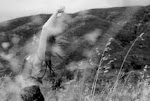Nature holds a captivating power that makes us feel good and contributes to our well-being. From breathtaking landscapes to the smallest intricacies of life, our connection to the natural world has a profound impact on our physical, mental, and emotional well-being. There are many positive effects of nature in humans. Here are some.
Physical Health:
The natural world offers numerous avenues for physical activity and recreation, promoting a healthy lifestyle. Engaging in outdoor activities such as hiking, swimming, or cycling stimulates our bodies and enhances cardiovascular fitness. Also, remember that regular exposure to sunlight also aids in vitamin D synthesis, strengthening our bones and immune system.
Mental Well-being:
Nature acts as a powerful antidote to the stresses and anxieties of modern life. Being in natural surroundings fosters a sense of tranquility and peace, reducing levels of stress, depression, and anxiety. From a biological perspective, spending time in green spaces can lower cortisol levels, a hormone associated with stress, while simultaneously increasing endorphin release, promoting feelings of happiness and contentment.
Cognitive Benefits:
Nature has a remarkable impact on our cognitive abilities and mental acuity. Spending time in natural environments improves attention span, memory, and problem-solving skills. The restorative effect of nature helps replenish our mental resources, allowing us to concentrate better and enhance our overall cognitive performance.
Emotional Resilience:
Nature has the power to evoke profound emotions within us. Whether it's the awe-inspiring sight of a mountain range, the gentle sway of trees in the breeze, or the melodic chirping of birds, these experiences foster a sense of connection, wonder, and awe. Such positive emotions have been linked to increased resilience, empathy, and a broader perspective on life's challenges. Ever watched an ant closely and for a while?
Healing and Restoration:
The healing properties of nature have been recognized for centuries. Exposure to natural environments has been associated with accelerated recovery rates from physical ailments, reduced pain perception, and shorter hospital stays. The serenity and beauty of nature provide solace and comfort, aiding in emotional healing and providing a sense of hope.
Connection and Social Bonding:
Nature acts as a common thread that connects people. Sharing outdoor experiences with others strengthens social bonds and fosters a sense of community. Whether it'sengaging in group activities like gardening, picnics, or nature walks, or simply enjoying the company of loved ones amidst nature's splendor, these shared moments forge deep connections and enhance our social well-being.
The positive effects of nature on humans are undeniable. From the physical benefits of an active lifestyle to the profound impact on mental, emotional, and social well-being, our connection to the natural world is essential for a balanced and fulfilling life. As we navigate the demands of the modern world, let us not forget to immerse ourselves in the wonders of nature and reap the countless rewards it bestows upon us.




























